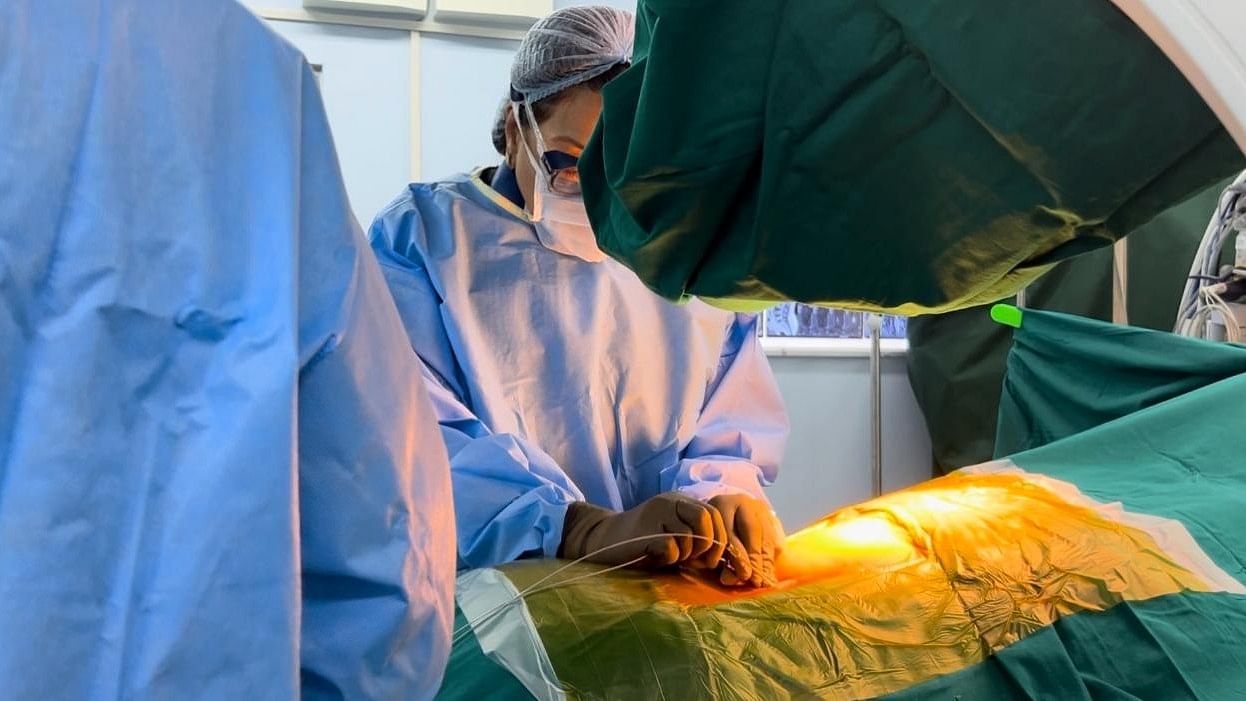
Dr Preeti Doshi performing the surgery.
Credit: Special Arrangement
Mumbai: The Jaslok Hospital and Research Centre in Mumbai succeeded in a groundbreaking medical intervention after treating Khaled Ali Hussein Al-Esayi, a 56-year-old accountant from Saudi Arabia, for severe intractable post-amputation pain syndrome.
The team was led led by Dr Preeti Doshi.
Al-Esayi was suffering from Type 2 diabetes mellitus and peripheral arterial disease. He underwent knee amputation in August 2019 owing to a diabetic gangrenous foot.
The subsequent development of an excruciating stump and phantom pain significantly impacted his mobility and quality of life.
Recognizing the challenges posed by traditional pain management methods, Dr Doshi and the medical team opted for a pioneering approach – spinal cord stimulation (SCS).
This advanced pain therapy involves low-voltage electrical stimulation applied to the spinal cord, creating a barrier for pain transmission. The results of the therapy were astounding, providing almost complete relief from his original severe pain.
"Al-Esayi's case presented a unique set of challenges given the severity of his post-amputation pain and the failure of previous revascularization procedures and multiple medications. The significant challenge was employing this intervention on Diabetic patients. Spinal cord stimulation offered a non-destructive, reversible solution, providing ongoing analgesia and significantly improving his quality of life. Spinal cord stimulation has proven to be an effective therapy for intractable pain syndromes," said Dr Doshi.
This case demonstrates its potential in addressing the complex and debilitating nature of post-amputation pain, offering hope to patients who have exhausted traditional treatment options.
Dr Milind Khadke, Director Medical Services of Jaslok Hospital & Research Centre said: "This successful case marks a significant milestone for medical science, particularly in the realm of post-amputation pain and neuropathic pain conditions. Given the prevalence of diabetes and associated complications, spinal cord stimulation can be a game-changer in pain management. It not only addresses neuropathic pain but also holds promise for improving peripheral circulation in diabetic patients, contributing to a significant advancement in our approach to diabetic care."